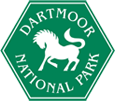Plants
The majority of Dartmoor is on granite, with acid soils. We also have a lot of rain! This has resulted in a unique community of plants specially adapted to these difficult conditions. The highest tops of Dartmoor are covered in blanket bog, where bog mosses and different sedge species are the most common species. Greens, browns and reds are the dominant colours, with delightful splashes of white in June from the flowering cotton grass.
Slightly lower down the slope, you will find extensive areas of moorland. A lot of moorland is grass moor, but some areas are characterised by western heath, which turns into a sea of yellow and purple in late summer as the heathers and western gorse are in flower.
On the enclosed farmland, the soil can be slightly less acid. We have some 450 hectares of species-rich grasslands, which are awash with colour between May and August. Here, you will find species such as heath spotted and greater butterfly orchids, as well as the more dainty eyebright, black knapweed and oxeye daisy. The more damp areas of pasture along the river valleys can be very rich in purples, such as marsh orchids and devil’s bit scabious
Our woodlands are classed as temperate rainforests, with mature oak trees covered in mosses, lichens and ferns dominating the scene, often over a carpet of bluebells.
Dartmoor National park works in partnership with the Devonshire Association, Plantlife and Botanical Society of Britain and Ireland.
